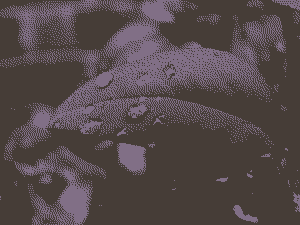Greg Lee posted on a thread I had about going 4K or OLED or 1080p. He mentioned this new technology that they are putting infront of us now called HDR-LED tv's that are moving to 10bit colour depths from the current 8bit that in theory will give a more accurate colour picture on our TV.

To understand the technology, you first have to consider the history. Back in the early days of home computing, the displays were CRT that in effect have infinite number of colours, but computers are digital and driven by 1's and 0's. So we broke colour down to a number of bits. A 1 bit colour can give you either an 'on' or 'off' for any colour, so in effect it is black and white. To get grey, you used a dithering technique that fools your eyes into thinking that a black pixel beside a white pixel is combined to make a grey. As memory was expensive the cost of running extra bits of data to represent colour was prohibitive.
Now if you jump to 2 bit colour, you are still in black and white but with 2 additional grey intensities. This makes the image appear less grainy but still lacks colour.

When you jump to 4 bit colour, you now have enough memory space to get actual colour. 16 distinct colours to be exact. As our eyes break down what we see into three colour cones those 16 colours are broken into 4 shades of red, green and blue plus black, white and 2 grey. With the use of dithering, you can make your eyes perceive more colours with the strategic placement of those colours.
But as technology moved on, and computers got more memory, we moved to 8 bit colour (256 distinct colours) that made everything look more realistic. Then 16bit (65536 distinct colours) and finally 24bit (16,777,216 colour variations). As more colours are added to the possible image pallet, the amount of dithering required is reduced as you can use a closer and closer approximation to the real thing. At first glance, the images are very close to being the same, but if you look much closer, you can see that they are all using some form of dithering to achieve the final image.
Now in TV terms we took on a new naming convention we started to use just the number of colours for a single channel. So a computers 24bit colour = 8bit on a TV.
The newer HEVC colour standards are now moving to 10bit colour on the TV. This improves the number of colours available to an impressive 1 billion+ colours.
But here is where the breakdown occurs. We are now not only going up in the resolution on the screen, but also wanting to increase the number of possible colours each one of those pixels represents. Flip back to the old days of computing, where colour was limited by the cost of memory, now we have a different limiting factor... bandwidth. According to the HDMI2 spec: The total bandwidth required for all of this data is 2440 x 4400 x 60 x 30 = 17.82 gigabits per second (Gbps).
H.265 is the new answer and it uses two techniques. Break the display into smaller blocks so you can define the colour of the pixels in that block relative to neighbouring pixels, and only update the things that have changed from frame to frame. But even that is not enough as the number of blocks goes up with the resolution count, the next step is like MP3 music files, start throwing away data that most people would not perceive as being different. In a slow moving not too much going on scene, the compression has enough bandwidth to keep up. As action starts to happen, and things move fast, then the amount of change exceeds the bandwidth available and something needs to get thrown out. The easiest to chuck is colour depth. So on your action movie, your 10bit colour is thrown out the window for 8bit, then 7bit, then 6bit colour so the frame rate is preserved. Failing that, then blocks of the screen get dropped from being updated and you get the NetFlix screen tare effect. Now on blu-ray there is a whole lot of data bandwidth compared to streaming, but at 4K you are still going to run out of bandwidth on a fast moving film. So your 10bit colour gets chucked in the process.



